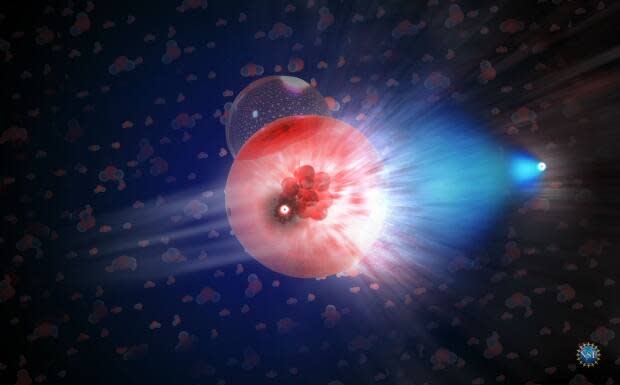U of R physicist gets funding to help explain mysteries of the universe

A University of Regina physicist has been awarded $1.4 million to take part in a massive project aimed at detecting neutrinos to help explain the mysteries of the universe.
Dr. Mauricio Barbi, an experimental physicist, is part of a team of researchers that received funding through the Canadian Foundation for Innovation's (CFI) Innovation Fund.
The University of Victoria received $5.4 million to lead the Hyper-Kamiokande, or Hyper-K, project, which includes 84 institutes in 17 countries.
Barbi and his team at the U of R are getting $1.4 million of that grant.
"Hyper-K will use highly-advanced technology to collect data from the interaction of neutrino particles and the Intermediate Water Cherenkov Detector (IWCD)," Barbi said in a news release.
The IWCD is an eight-metre tall, 10-metre diameter water tank with a suite of electronics designed to measure the elusive neutrinos.
"These neutrinos can – when interacting with the oxygen in the water – produce other sub-atomic particles that can travel faster than the speed of light and create cones of light in the detector," Barbi said.
Barbi and his team will be responsible for ensuring some of the complex components developed for the IWCD meet the specifications to ensure the detector will operate optimally.
Neutrinos are tiny, neutral particles nicknamed "ghost particles," because most of the time they pass right through stars, people and other matter without interacting. Billions of low-energy neutrinos from the sun pass through one of your thumbnails every second.
"We are conducting a next-generation neutrino experiment to understand how the asymmetry between the production of matter and anti-matter allowed for the existence of galaxies, stars, planets and even ourselves in the Universe," Barbi said.
By using water as a medium, researchers can observe particles going faster than light.
"Because each particle in the IWCD produces a cone of light that has specific characteristics, once reconstructed, we can identify the exact particles and the type of neutrino that interacted with the oxygen," said Barbi. "From there, we can begin to extract the exact properties of the neutrinos – which literally opens up the universe to us."
Mitochondria research
Meanwhile, U of R biochemist Dr. Mohan Babu received $1.4 million in CFI funding for research into mitochondria cells that may lead to new treatments for chronic diseases,
"Mitochondria exist in our cells, helping to turn the food we eat into energy that the cell can use," Babu said. "Mitochondria that aren't functioning correctly are believed to be a key factor in a range of chronic diseases, including psychiatric (bipolar disorder), neurological (multiple sclerosis), and metabolic disorders (obesity-linked non-alcoholic fatty liver disease) that require billions of dollars in annual healthcare costs."
The grant will help create the Mitochondrial Systems (mitoSYSTEMS) Research Centre at the U of R.
The facility will house 10 researchers/clinicians who will research the role of mitochondria in chronic diseases and will work with industry to translate their findings into drug therapies and clinical trials.
"Current therapies relieve some disease symptoms, but their underlying attributes remain unclear," said Babu.

